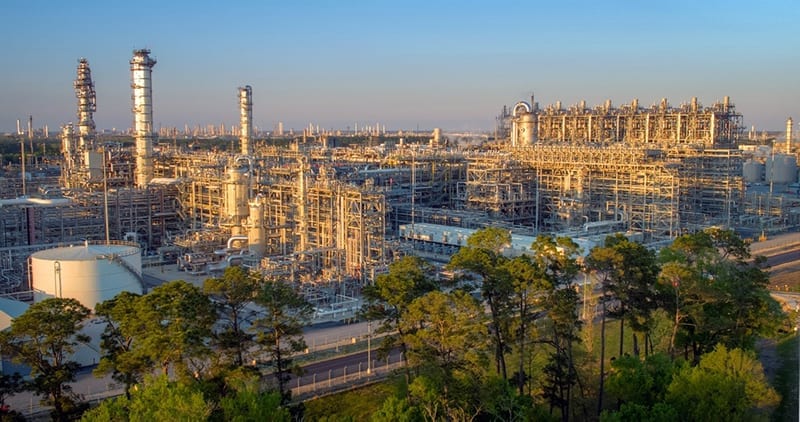
Step-by-Step Approach to Effective Asset Management
How FDT® technology helped Chevron Philips Chemical Company LP save time and reduce costs during all phases of a Greenfield plant project.
Author: Amit Ajmeri – DCS Specialist – USGC2 Project, Chevron Phillips Chemical Company LP
In the process industries, as a plant lifecycle moves from the planning, design, engineering and start-up phases to the operation phase, the focus is on keeping processes running at optimal efficiency and lowest possible costs.
A good asset management system does more than assist with troubleshooting problems with field devices and other equipment; it can also help improve the overall performance of an industrial facility. The true value of asset management can only be realized through a step-by-step approach addressing all phases of the asset lifecycle – and encompassing plant personnel and management – focused on achieving bottom-line benefits.
Introduction
The goals of maximizing assets and improving plant reliability are critical today. Measurement and control devices used to automate manufacturing facilities are assets because they produce financial value. For years, these intelligent assets were configured, installed and basically forgotten. That is, until they malfunctioned or caused a failure, which might have resulted in a significant loss of value.
With the right asset management system, operations and maintenance personnel can work together to proactively extend equipment life and prevent breakdowns by closely monitoring device diagnostics. Every field device has to be configured, calibrated and maintained, and its information managed over its entire lifecycle.
Today’s Operating Challenges
For profitable operations, it is vital for industrial sites to improve overall efficiency and lower costs. Accomplishing these goals means plant personnel must respond quickly to potential problems. Operations and maintenance teams are now asked to do more than simply identify problems and fix equipment breakdowns – they are expected to work together to increase efficiency, minimize downtime, and extend the life of equipment.
Industrial organizations must also make sure essential know-how is not lost. With the retirement of experienced operators, they stand the risk of losing the knowledge and expertise needed to properly maintain assets in the field. The new generation of workers also prefers to use digital technology to fulfill their day-to-day responsibilities.
Lastly, plants of all sizes require a more efficient maintenance approach. They need to know exactly what is happening with field devices. Two perennial conditions, however, often stand in the way to gathering timely and consistent diagnostic data. First, instrumentation often requires using vendor-specific software, forcing engineers to be familiar with numerous environments, tools and optimizing features. Second, many devices and business systems operate on different fieldbuses, creating the need for special hardware and expertise for even basic data sharing.
To ensure effective asset investment decision-making and to achieve sustainable results in plant performance, companies require a holistic approach to lifecycle management enabling vast amounts of asset data to be effectively managed and leveraged at a practical day-to-day level. Moreover, asset operability and maintainability doesn’t stop at design – it is a continuous feedback loop that should feed into future projects.
Focus on Greenfield Start-up
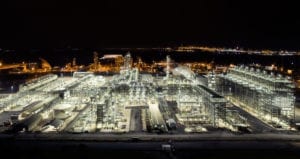 Chevron Phillips Chemical Company, one of the world’s top petrochemical producers, recently undertook the U.S. Gulf Coast (USGC) Petrochemicals Project, which included a 1.5 million metric tons/year (3.3 billion pounds/year) ethane cracker built at its Cedar Bayou facility in Baytown, Texas, and two 500,000 metric tons/year (1.1 billion pounds/year) capacity polyethylene facilities constructed at its Old Ocean, Texas, site.
Chevron Phillips Chemical Company, one of the world’s top petrochemical producers, recently undertook the U.S. Gulf Coast (USGC) Petrochemicals Project, which included a 1.5 million metric tons/year (3.3 billion pounds/year) ethane cracker built at its Cedar Bayou facility in Baytown, Texas, and two 500,000 metric tons/year (1.1 billion pounds/year) capacity polyethylene facilities constructed at its Old Ocean, Texas, site.
Project design for the Greenfield initiative started in 2012, with mechanical completion in 2017 and startup/commissioning in February 2018. The first on-spec product was produced in March 2018.
As fate would have it, Hurricane Harvey impacted completion of the USCG work. The storm made landfall in Texas on Aug. 25, 2017, as a Category 4 hurricane and was responsible for approximately $125 billion in damage in the region. It flooded large parts of the South Texas petrochemical facilities and impacted many plant assets, delaying startup of the new processing units.
As part of the USGC project, Yokogawa (Automation Vendor) was enlisted to serve as Main Automation Contractor (MAC) and provide a wide range of measurement and control products. The automation architecture consists of the Yokogawa CENTUM™ Distributed Control System (DCS) with Field Control Station (FCS) controllers, along with a Triconex Safety Instrumented System (SIS). It also includes various nodes and Input/Output (I/O) cards, as well as Yokogawa’s Plant Resource Manager (PRM) asset management solution with servers and clients. In addition, the control system incorporates FOUNDATION™ Fieldbus devices from multiple vendors for process measurement and control and utilizes HART instrumentation from different suppliers for Programmable Logic Controller (PLC) packages and safety applications. Intelligent devices were employed to help shorten start-up time and provide advanced diagnostic capabilities.
The PRM solution proved to be a key tool for optimizing asset management. The software accesses data, provides an appropriate setting and adjustment environment, and displays field device status. PRM streamlines and unifies integration of devices and networks while providing a single access point to the entire application topology. It also enables communication flow of data bi-directionally in a standardized and interoperable environment to help support intelligent operations and smart manufacturing.
At the same time, Yokogawa’s InsightSuiteAE suite of services works with PRM to maximize asset value by monitoring all plant-wide equipment utilizing a fieldbus and digitizing various Key Performance Indicator (KPI) metrics linked to the health of the equipment.
The plant asset management system employs separate PRM Servers for the plant’s hot, cold and utility sides, and the SIS. There are PRM Clients for each Engineering Work Station (EWS). The InsightSuiteAE Server and Client are used to deliver field asset KPI reports, as well as loop and valve comprehensive reports.
Role of FDT Technology
Using the right standardized tools that are protocol, device and supplier independent can be one of the many keys to creating an effective and successful asset management program. FDT® Group standard (IEC 62453, China GB/T 29618-2017 and ISA/ANSI 103) provides the core component of an effective asset management system. This technology standardizes the communication interface between field devices and control systems, and, as such, eliminates the barriers to information. It provides independence from the communication protocol and the software environment of the device/host system.
FDT® technology consists of two main components: the FDT/FRAME™ and FDT/DTM™. The FDT/FRAME™ is either an embedded component of the control system suite or a standalone application, whereas the FDT/DTM™ is a device-specific application that launches within the FRAME or FRAME-enabled host. Simply put, Device Type Managers™ (DTMs™) give device manufacturers complete control of the attributes displayed for their device in host applications, thus offering the user access to the full power and capabilities offered in their device.
With FDT® technology embedded in process control systems like the Yokogawa CENTUM™ system via access to PRM, plants or factories leveraging devices from multiple suppliers using multiple networks can institute a single asset management solution to access configuration parameters for each device. This provides access to data for higher-level applications, decreases integration costs, improves operational and maintenance efficiency, and optimizes plant assets.
In the case of the USGC project, a single asset management solution was used to initiate and manage the DTMs for all devices. This solution contains the communication component to interface with the specific fieldbus protocol and enables the device to interoperate with the system engineering and operating environment.
Phases in the Asset Lifecycle
USGC participants took a step-by-step approach to the design, commissioning, startup and operation phases of the project to ensure a successful asset management solution. Different information was used at different stages of the plant to speed up implementation and realize specific engineering benefits.
The project team recognized there was a need for integrated plant asset management activities over the entire lifecycle of the new facilities. This approach would provide plant design engineers, operating personnel, company management, and solution partners with a continuous flow of data meeting their specific needs across all project phases.
Too often, an asset management solution is only utilized during a specific stage of an automation project. It then becomes irrelevant and falls into disuse following the intended phase.
Design:
During the design phase, the project team focused on ensuring the Functional Design Specification associated with the asset management system was written in such a way as to deliver maximum benefit during all phases of the project. The work also included identification of necessary third-party packages, and definition of requirements for Factory Acceptance Testing (FAT) and Site Acceptance Testing (SAT). Instruction manuals, general specification sheets and drawings were all included as part of each asset for easy future reference.
Commissioning:
In the commissioning phase, project participants sought to capture all available diagnostic information during loop check procedures. Their objectives were to: 1) confirm that asset management was fully utilized for device connectivity, as well as Device Description (DD) and DTM management for all instruments, and 2) to create baseline data for field assets for future diagnostic purposes. For instance, they checked to make sure control valve signatures were captured during loop check. Ease of parameter setting was another key benefit of the FDT-based PRM solution. Control room access to parameters in all devices provided a big time saving, especially with project delays caused by Hurricane Harvey.
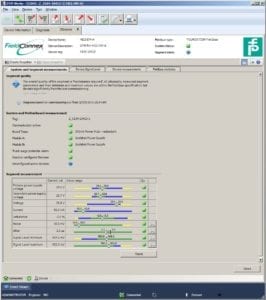
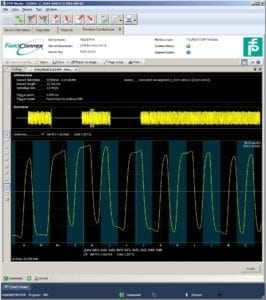
From the PRM stations, plant personnel can oversee all intelligent field instrumentation connected to the asset management system. Pepperl+Fuchs Advanced Diagnostics Modules (ADMs) were employed for online monitoring of the fieldbus physical layer. ADM DTMs established all the baseline data for FOUNDATION™ Fieldbus cable/segment checkout. The DTMs saved a tremendous amount of time during commissioning to capture physical layer data for fieldbus segments and were a valuable tool for troubleshooting from a centralized location. Here, too, the Functional Design Specification provided assurance that the asset management system included all of the required tools for future stages of the project.
Engineers at the Cedar Bayou facility verified the information for their healthy device list prior to the arrival of Hurricane Harvey, and then confirmed that most of the devices were in the same healthy condition after the storm. They did not have to perform any diagnostics checks for those devices.
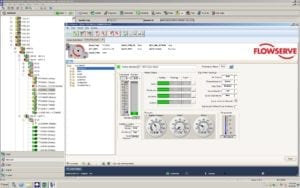 Start-up:
Start-up:
During the startup phase, asset diagnostic data from earlier phases of the project proved to be invaluable for troubleshooting to eliminate communications problems and other issues. In addition, plant engineers were able to streamline tasks such as fine-tuning of device configurations and calibration of valves and transmitters and optimize functional test procedure support. Furthermore, they took advantage of detailed reports on bad instrumentation.
Operations:
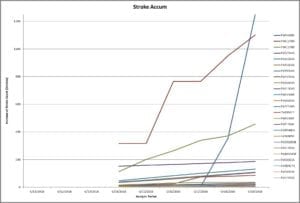 Within the operation phase, plant personnel use asset management and diagnostics from a central location to help manage day-to-day asset monitoring and alarms, and reduce the cost and downtime associated with repairs. They will have a single Human-Machine Interface (HMI) for network and topology scanning, user management, documentation and diagnostics, as well as offline engineering. Specific activities will include: Partial Stroke Test (PST) management, DD and DTM management, document updates, operating system and software patches, and revision upgrades. Plant personnel will also use InsightSuiteAE for report generation and to identify bad actors for maintenance procedures.
Within the operation phase, plant personnel use asset management and diagnostics from a central location to help manage day-to-day asset monitoring and alarms, and reduce the cost and downtime associated with repairs. They will have a single Human-Machine Interface (HMI) for network and topology scanning, user management, documentation and diagnostics, as well as offline engineering. Specific activities will include: Partial Stroke Test (PST) management, DD and DTM management, document updates, operating system and software patches, and revision upgrades. Plant personnel will also use InsightSuiteAE for report generation and to identify bad actors for maintenance procedures.
Benefits to Plant Operators
To minimize design cost and time, and maximize equipment uptime, engineers, operators and technicians at industrial facilities must optimize their workflows. The primary success factor involved in achieving this goal is consistent data management using an optimum asset management software solution.
Asset management diagnostic tools can provide clearly recognizable alerts for both operations and maintenance personnel that help them determine the severity of a device problem.
A correctly installed and maintained asset management system can facilitate troubleshooting activities, speeding problem resolution and quickly returning devices back to their normal working state. Documenting actions taken to resolve problems will help technicians know the best correction procedure in the future, and the asset management system is the recommended place to store this type of data.
As described in this article, the use of FDT® technology within Yokogawa’s PRM system enables seamless integration across multiple communication protocols and vendor instrumentation. The solution is unified within a single interface to optimize operations, maintenance and training procedures.
For most plant personnel, FDT® is an unseen technology that makes their jobs easier and enables higher levels of performance and efficiency. The technology eliminates the need for trips to the field, allowing workers to perform configuration and calibration checks from the comfort and safety of the control room. This is possible with an enhanced HMI that accurately depicts valve curves and other parameters on a tablet or other mobile device.
Future plans at the Cedar Bayou facility call for the increased use of data analytics with smart instrumentation. This includes the deployment of predictive maintenance strategies, whereby predictive software will enable maintenance technicians to foresee potential device failures, avoid unplanned downtime for service and repair, and reduce costs.
Conclusion
Now, more than ever, industrial organizations need to minimize downtime, reduce engineering costs, improve data accuracy, proactively monitor field devices across multiple protocols, and setup vendors’ devices correctly using one software environment.
In this application, plant operators assisted by Yokogawa as Main Automation Contractor were able to simplify an array of design, configuration, operations and maintenance tasks as part of a large Greenfield project. By providing transparency, ease of use, and multi-vendor/protocol support, FDT® technology played an important role in the successful outcome.
References:
Hurricane Harvey information from https://en.wikipedia.org/wiki/Hurricane_Harvey